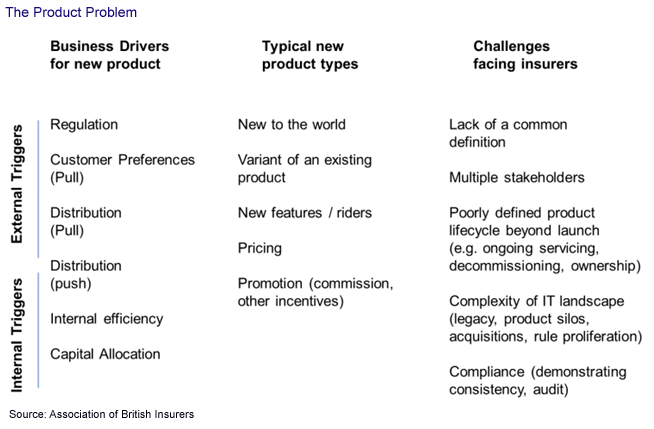Designing for Product Agility: Where Should Insurers’ Products Live?
Abstract
Celent describes distinguishing factors in addressing product change and adopting product engines. We also discuss the benefits and concerns associated with these approaches.
Insurance product complexity is grounded in operating model complexity and system complexity. In other words, insurers have adopted lots of systems and models for change over time and have run them in parallel. These systems tend towards entropy—if they aren’t managed towards simplicity, they grow in complexity over time. It is in examining the systems (people and IT) that change products that we understand the complexity of those products: the sources of cost, and the inhibitors to change.
In the report Designing for Product Agility: Where Should Insurers’ Products Live?, Celent examines the nature of individual insurance products, libraries of products, and the drivers that lead to different schemes for managing insurer products. Celent further provides some tools to help insurers understand their unique requirements for product engines and how they should select one.

“Just as insurers differ in the definition of insurance products, so their structures differ to reflect their priorities. Assumptions about where product components sit and their relative priority in terms of frequency of change define the DNA of the insurer,” says Craig Beattie, Senior Analyst with Celent’s Insurance Group and author of the report, “It is strategically important to understand the current position of the insurer as well as where the insurer wants to be. Appropriate assumptions about product components allow insurers to respond effectively to changes in the market.”

